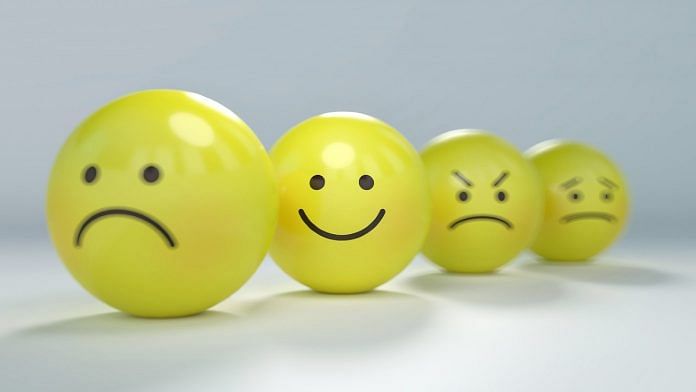Bengaluru: Optimists and pessimists are not two sides of the same coin, at least when it comes to neural activity. Researchers from Japan and Australia found that unhappiness, or rather pessimism, hits each person differently.
While optimistic people have a similar neural processing when thinking about the future, pessimists show different levels of neural activity, according to a study published in the Proceedings of the National Academy of Sciences. The researchers did a functional magnetic resonance imaging (fMRI) to probe into the brain activity in 87 participants as they thought of different future events that were marked as positive, neutral or negative.
The medial prefrontal cortex (MPFC)—a part of the brain that is involved in thinking about the future and processing emotions—of the participants was analysed.
The team of scientists found that optimism has a trait of shared experience whereas pessimism showed no pattern in the brain activity.
The findings, the paper suggests, will have implications for the understanding of treating mental health conditions such as clinical depression.
Also Read: In breakthrough study, TIFR team uses psychedelic to identify neurons that modulate anxiety
Glass half full outlook
Optimists are perceived as people who can emotionally be distant from negative events in life when thinking about the future. Previous research also pointed out that people with a positive mindset have similar personality traits that leads to a shared way of interpreting experiences in life.
Optimism is considered as how the brain comprehends future thoughts. For such people, according to the study, positive events stand out more sharply from negative ones with a clear mental separation that keeps them hopeful.
Participants were asked to read out scenarios that were happy, neutral and sad and some related to death. They were then asked to imagine scenarios putting themselves as well as someone else in it.
In this way, scientists were able to compare how people think about themselves and others in such situations.
As the participants imagined these scenarios, scientists tracked brain activity, especially in MPFC. To analyse the data, the team used a method called intersubject representational similarity, which gives a picture of how similar people’s brain patterns are.
The scientists processed data using Statistical Parametric Mapping (SPM) using a special software called SPM-12. At first, they aligned the brain images to correct for any head movements that might impact the imaging. Then each person’s brain was segmented into gray matter, white matter and cerebrospinal fluid. Further into the study functional scans to compare the brain activity across participants, especially MPFC.
According to Kuniaki Yanagisawa, the co-author of the study, the research helped to see an abstract everyday feeling that some people think alike with the help of patterns of brain activity.
By analysing brain activity patterns, the study showed that optimistic people process future events more distinctly than pessimistic people.
Simply put, optimists can separate good and bad possibilities more clearly with more neural clarity. This might be why optimists maintain a brighter outlook, while pessimists find it hard to separate between positive and negative events.
Nonetheless, the similar traits in optimistic people can also be the reason that the average population is more similar in behaviour and thoughts than people with any mental health condition, according to Tali Sharot, a neuroscientist at University College of London.
(Edited by Tony Rai)
Also Read: Scientists find ‘dial’ in brain that controls immune system, hope for autoimmune disease treatment






